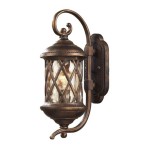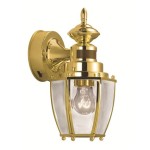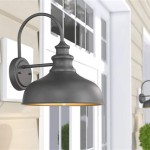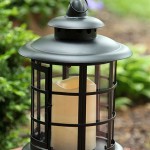How To Protect Acrylic Paint On Wood Outdoors
Acrylic paint, prized for its versatility and vibrant colors, is a popular choice for various art and craft projects. However, when used on wood intended for outdoor display, acrylic paint requires specific protection to withstand the elements. Failing to adequately protect acrylic paint can lead to premature fading, cracking, peeling, and ultimately, the deterioration of the artwork or painted object. This article details the critical steps and materials needed to ensure the longevity and vibrancy of acrylic paint on wood exposed to outdoor conditions.
Wood, by its very nature, is susceptible to moisture absorption, temperature fluctuations, and ultraviolet (UV) radiation. These environmental factors can significantly impact the integrity of acrylic paint. Moisture can cause the wood to swell and contract, leading to cracks in the paint film. Temperature changes can induce expansion and contraction in both the wood and the paint, potentially causing delamination. UV radiation is particularly damaging, as it can break down the chemical bonds in the acrylic polymers, resulting in fading and chalking of the paint. Therefore, a multi-layered approach to protection is necessary.
The protection process begins with proper wood preparation, followed by the application of high-quality acrylic paint, and culminates in the use of protective sealants designed to withstand the harsh outdoor environment. Each step is crucial, and neglecting any one element can compromise the overall durability of the paint job.
Key Point 1: Preparing the Wood Surface
The foundation for a durable and long-lasting paint job is a properly prepared wood surface. This involves cleaning, sanding, and priming the wood to create an ideal surface for paint adhesion and protection.
The first step is cleaning the wood. Any dirt, grime, oil, or existing finishes must be removed. A mild detergent solution and a scrub brush can be used to clean the surface. For more stubborn contaminants, a stronger cleaner or degreaser may be necessary. Rinse the wood thoroughly with clean water and allow it to dry completely before proceeding.
Once the wood is clean and dry, sanding is essential. Sanding smooths the surface, removes imperfections, and creates "tooth" for the primer to grip. Start with a coarser grit sandpaper (e.g., 80-grit or 100-grit) to remove any rough spots, splinters, or old paint residue. Then, gradually move to finer grits (e.g., 120-grit, 150-grit, and finally 220-grit) to achieve a smooth, even surface. Always sand in the direction of the wood grain to avoid scratching or damaging the wood. After sanding, remove all sanding dust with a tack cloth or a vacuum cleaner.
Priming is a critical step, particularly for outdoor projects. A high-quality exterior-grade primer seals the wood, prevents moisture absorption, and provides a consistent surface for the acrylic paint to adhere to. Choose a primer specifically designed for the type of wood being used. For example, some primers are better suited for softwoods like pine, while others are formulated for hardwoods like oak. Apply the primer in thin, even coats, following the manufacturer's instructions. Allow the primer to dry completely before applying the acrylic paint. In some cases, two coats of primer may be necessary, especially on porous woods or in areas with high humidity.
For wood that is already painted, preparation involves assessing the existing paint condition. If the existing paint is in good condition, simply clean and lightly sand the surface to create a better bond for the new acrylic paint. However, if the existing paint is peeling, cracking, or chipping, it must be completely removed before proceeding. This can be done using a paint scraper, a heat gun, or chemical paint strippers. After removing the old paint, sand the wood smooth and prime it as described above.
Key Point 2: Selecting and Applying Acrylic Paint
Choosing the right type of acrylic paint and applying it correctly are crucial for achieving a durable and visually appealing finish. Not all acrylic paints are created equal, and some are better suited for outdoor applications than others.
When selecting acrylic paint, look for paints specifically labeled as "exterior" or "all-purpose". These paints are formulated with pigments and binders that are more resistant to fading, cracking, and peeling when exposed to sunlight and moisture. Artist-grade acrylic paints, while offering a wide range of colors and excellent pigmentation, may not be as durable in outdoor conditions as paints designed for exterior use. Consider the paint's UV resistance rating. Paints with higher UV resistance will retain their color and vibrancy longer when exposed to sunlight. Also, consider the paint's flexibility. A more flexible paint will be less likely to crack or peel as the wood expands and contracts with temperature changes.
Apply the acrylic paint in thin, even coats. Multiple thin coats are always preferable to one thick coat. Thick coats of paint can take longer to dry, and they are more prone to cracking and peeling. Use a high-quality brush, roller, or sprayer to apply the paint. Choose the appropriate tool based on the size and shape of the surface being painted. Allow each coat of paint to dry completely before applying the next coat. Follow the manufacturer's drying time recommendations. Typically, two to three coats of acrylic paint are sufficient for achieving good coverage and durability.
Pay attention to the application technique. Avoid brush strokes or roller marks that can detract from the finished appearance. If using a brush, use long, smooth strokes in the direction of the wood grain. If using a roller, use a consistent overlapping pattern. If using a sprayer, maintain a consistent distance from the surface and use a smooth, even motion. After each coat of paint has dried, lightly sand the surface with fine-grit sandpaper (e.g., 320-grit or 400-grit) to remove any imperfections and create a smoother surface for the next coat. Remove all sanding dust before applying the next coat of paint.
Consider using tinted primers. Tinting the primer to a color similar to the acrylic paint can improve coverage and reduce the number of paint coats required. This can save time and money, and it can also help to prevent the paint from becoming too thick, which can increase the risk of cracking and peeling.
Key Point 3: Sealing the Painted Surface
Sealing the painted surface is the final and arguably the most critical step in protecting acrylic paint on wood outdoors. A high-quality sealant provides a protective barrier against moisture, UV radiation, and other environmental factors that can damage the paint. Selecting the right sealant and applying it correctly are essential for ensuring the longevity of the paint job.
When choosing a sealant, look for products specifically designed for outdoor use and compatible with acrylic paint. There are several types of sealants available, including varnishes, polyurethanes, and acrylic sealers. Varnishes provide a durable, glossy finish and offer good UV protection. Polyurethanes are extremely durable and water-resistant, making them a good choice for high-traffic areas or surfaces that are frequently exposed to moisture. Acrylic sealers are water-based and offer good UV protection, but they may not be as durable as varnishes or polyurethanes. Consider the desired finish when selecting a sealant. Varnishes and polyurethanes typically provide a glossy finish, while acrylic sealers are available in a range of finishes, including matte, satin, and gloss. Also, consider the ease of application. Some sealants are easier to apply than others, and some may require special equipment, such as a sprayer.
Before applying the sealant, ensure that the painted surface is clean, dry, and free of any dust or debris. Lightly sand the painted surface with fine-grit sandpaper (e.g., 400-grit or 600-grit) to improve adhesion of the sealant. Remove all sanding dust with a tack cloth or a vacuum cleaner. Apply the sealant in thin, even coats, following the manufacturer's instructions. Multiple thin coats are always preferable to one thick coat. Thick coats of sealant can take longer to dry, and they are more prone to cracking and peeling. Allow each coat of sealant to dry completely before applying the next coat. Typically, two to three coats of sealant are sufficient for providing adequate protection.
Apply the sealant in a well-ventilated area. Many sealants contain volatile organic compounds (VOCs) that can be harmful if inhaled. Wear a respirator or mask to protect yourself from inhaling these fumes. Pay attention to the application technique. Avoid brush strokes or roller marks that can detract from the finished appearance. If using a brush, use long, smooth strokes in the direction of the wood grain. If using a roller, use a consistent overlapping pattern. If using a sprayer, maintain a consistent distance from the surface and use a smooth, even motion. After each coat of sealant has dried, lightly sand the surface with ultra-fine-grit sandpaper (e.g., 800-grit or 1000-grit) to remove any imperfections and create a smoother, more durable finish. Remove all sanding dust before applying the next coat of sealant.
Regularly inspect the painted and sealed surface for any signs of damage, such as cracks, peeling, or fading. If any damage is detected, repair it promptly to prevent further deterioration. Reapply sealant every few years, or as needed, to maintain the protective barrier and ensure the longevity of the acrylic paint. By following these steps, one can significantly extend the lifespan of acrylic paint on wood outdoors, maintaining the aesthetic value of the painted object for years to come.

How To Seal Acrylic Paint On Wood Exploring Sealers

How To Seal Acrylic Paint On Wood Learn About Sealing Paints

How To Protect Acrylic Paint On Wood 8 Steps With Pictures

How To Protect Acrylic Paint On Wood 8 Steps With Pictures

How To Seal Acrylic Paint On Wood Learn About Sealing Paints

How To Seal Acrylic Paint On Wood Exploring Sealers

How To Seal Painted Wood For Outdoor Use 7 Easy Steps

How To Seal Acrylic Paint On Wood Best Clear Sealants

How To Seal Acrylic Paint On Wood Diffe Sealers

How To Protect Acrylic Paint On Wood 8 Steps With Pictures
Related Posts







